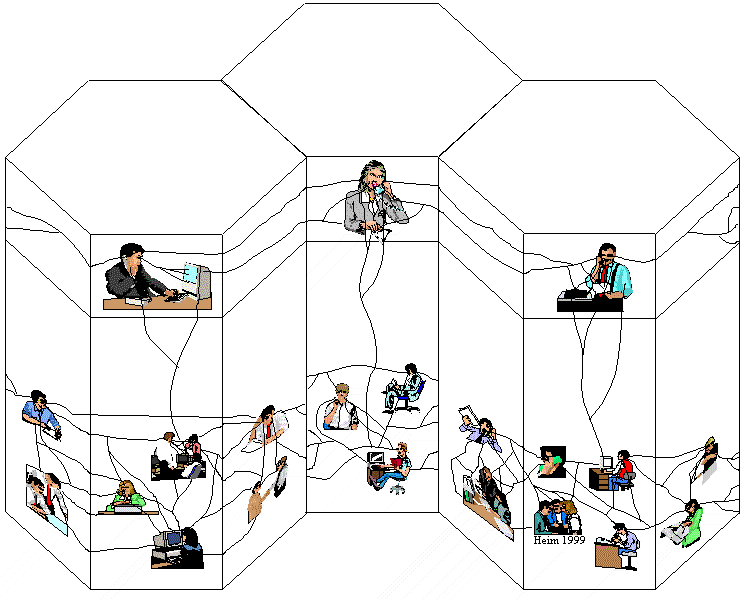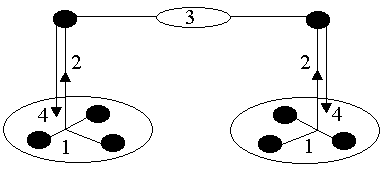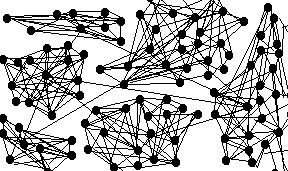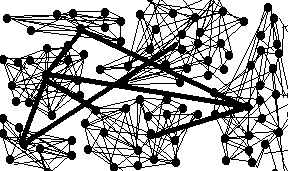Hierarchies and Departments in Neural Companies |
||
| It is much en vogue today to speak of hierarchies and departmental structures as something quite obsolete. But has anyone clearly laid out what hierarchies and departments are there for with respect to knowledge work? Let us take a look at a typical organizational layout. | ||
|
||
| In a any traditionally evolved company, there are rather strict rules as regards to who should communicate with whom. Usually, trans-departmental communication takes place in the "representative mode": any one delegate from a department meets delegates from other departments to discuss matters of wider imapct. The results are carried back into the departments by exactly these people. Where the representation of a department is a matter of social status, the delegate will most often be the boss of the department, but this makes no difference to the point presented here. | ||
| In figure 1, the delegates would meet on a higher level than their departments. They take with them their departments` knowledge and wishes in a condensed and filtered version. | ||
| So most
information flowing between different departments takes
the the following way:
1. intradepartmental
preparation If ever you worked in a larger, traditional, company or adminstrative body you will appreciate how strange it may be to neglect this way by speaking to another colleague of equal rank but from another department directly. |
||
The following hypothetical experiment will help to clarify this idea. Suppose it was possible to monitor any interaction between the workers within an organization. Each person is represented by a black dot and each interaction will be represented by a line. The picture emerging after a while may look something like the following.
Without knowing which person i. e. which black dot, belongs to which department, we will however be able to clearly recognize different departments. If we now continue this experiment and mark any communication between different departments with a bold line, the picture will look like this:
The delegates, or heads, of departmens will show very clearly. |
||
| Now, this structure is strongly reminiscent of the physical layout of the neural cortex. The neural cells in the cortex are arranged in 6 layers. These correspond to hierarchies. But there are also departments called coloumns. John Eccles has described these quite extensively and these coloumns run right through the different layers. The connections between the neurons markedly resemble the result of the hypothetical experiment as shown in figures 3 and 4. | ||
| Most neurons are connected to neurons of the same horizontal hierarchical level and within the same vertical coloumn. There are only some specialized cells communicating with equally specialized cells from other layers and other coloumsn. | ||
| As both large social organization as well as human brains are the result of some hard evolutionary selection, we may suppose an underlying principle to express itself in this similarity. | ||



